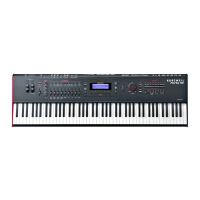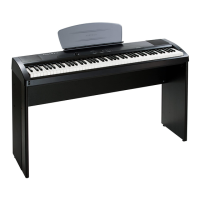17-8
FUNS
The FUN Equations
successive graph represents the same change in the value of Input b, at successively lower
values for Input a.
This equation works as intended only when the value of Input a is 0 or positive. Negative values
for Input a will result in a much less predictable response than positive values. You might like
the effect, but it wonÕt be anything like what weÕve just described.
Figure 17-4 lowpass (f = a, b)
hipass (f = a, b)
With this equation the low values of Input b are Þltered according to the value of Input a. This
causes somewhat different results compared with the lowpass equation above. At low values for
Input a, low values for Input b will have little effect, while high values for Input b will cause the
FUN to quickly reach full effect then slowly sweep down to its starting level. At high values for
Input a, a rapid change in the value of Input b will have little effect. At low values for Input a,
rapid changes in the value of Input b will cause the FUN to respond quickly to the change, then
slowly fade back to minimum effect. Listening to the effects at different values for each input
will give you the best understanding.
The four graphs below show the effect of different values for Input a on the change of Input b. In
each graph, the value of Input b drops from +1 to 0. In graph 1, the value of Input a is +1. Each
successive graph represents the same change in the value of Input b, at successively lower
values for Input a.
input b
value
time
input b
value
time
input b
value
time
input b
value
time
1)
4)3)
2)

